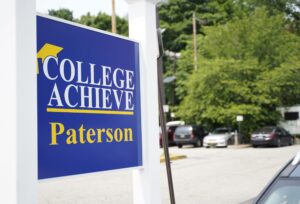Black and Latino Charter Students Outperform Peers by Double Digits in 2023 Test Scores
 Written By Gabriella Dragone
Written By Gabriella Dragone
Published December 12, 2023 at 3:22 PM
HAMILTON, NJ — The New Jersey Department of Education (NJDOE) released 2023 statewide assessment scores for all K-12 public schools in the Garden State. The data shows that Black and Latino students enrolled in New Jersey’s public charter schools outperform Black and Latino students in their comparative districts by 17 points in English language arts (ELA) and 10 points in mathematics on the New Jersey Student Learning Assessment (NJSLA). This data confirms that public charter schools continue to make significant student achievement gains for students of color in under-resourced communities throughout New Jersey. Forty-five percent of public charter school students are Black, 40% are Latino and 90% of all public charter school students attend schools in Schools Development Authority (SDA) or former Abbott districts.
An analysis of test scores disaggregated by the six cities which have the largest number of charter school students demonstrate similar findings. Public charter school students in Camden, Jersey City, Newark, Paterson, Plainfield and Trenton are significantly more likely to meet proficiency on state assessments.
College Achieve Public Schools (CAPS) is a non-profit public charter school network serving students in Plainfield, Paterson and Asbury Park. CAPS closed the achievement gap between Black/Latino students and White students in 14 out of 21 grade levels tested in ELA. CAPS Paterson produced year over year proficiency gains of 20 points in ELA and 13 points in Math.
“These results vindicate the belief that led us to found CAPS: that all students have unique gifts and talents – and if given access to a rigorous college preparatory program, they will soar”, Michael Piscal, Founder & CEO of College Achieve Public Schools (CAPS) said. “Far too many NJ students — especially students of color and students experiencing poverty — are denied educational opportunities they deserve, and we are proud to help buck that trend in all three regions we serve. Congratulations to our students, educators, and the CAPS community for this remarkable achievement.”
“Yet again, public charter schools continue to make gains despite severe headwinds caused by the pandemic. While there is still work to do, our remarkable public charter school educators deserve recognition for the undeniable progress our students have made — they’ve accelerated learning and provided strong social and emotional supports for our students, particularly students of color in our urban districts,” TJ Best, Senior Advisor for the New Jersey Public Charter Schools Association (NJPCSA) said. “We must follow the data and replicate what works because our students deserve the best. The public charter school community looks forward to sharing how these strong outcomes were achieved with other public schools and key stakeholders throughout New Jersey.”
New Jersey’s public education system is widely regarded as the best in the nation. In Newark, Black and Latino public charter school students beat the New Jersey state average in English language arts, with 52% of students scoring proficiency (levels 4 or 5) on the NJSLA compared to the state average of 51% in grades 3 through 8. This incredible accomplishment demonstrates that zip code does not determine the quality of education a child receives.
Robert Treat Academy Charter School in Newark is a former Blue Ribbon School and serves nearly all students of color. In 2023, proficiency rates at Robert Treat outpaced the state average by 17 points in ELA and 10 points in mathematics.
“The education my daughter is receiving at Robert Treat Academy Charter School will open doors for her long after she has left the classroom. I am overjoyed with the progress she is making and the immense challenges she is overcoming following the COVID pandemic,” Harolyn Orozco, a parent of an 8th grade student currently attending Robert Treat said. “I wish every parent across New Jersey had the same opportunities as my family and could send their child to a school that best meets their individual needs.”
The original article appeared in TAPinto Paterson and can be seen here.
